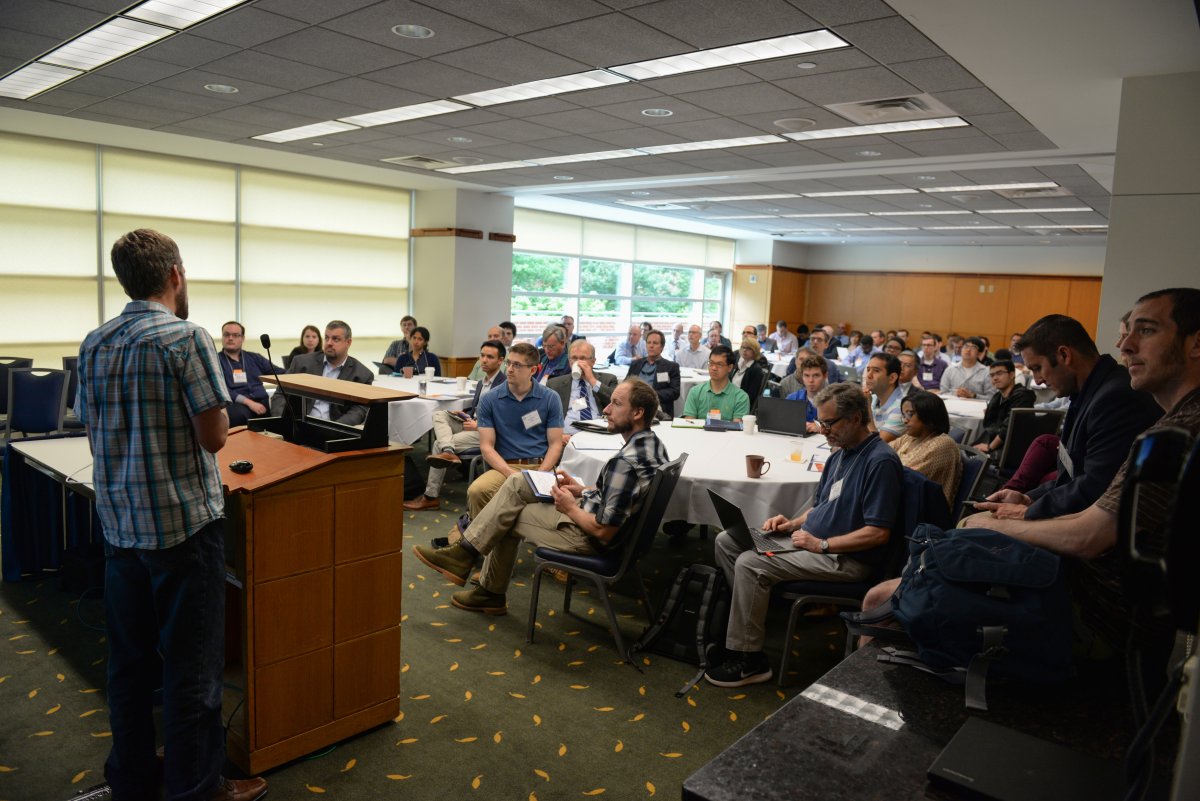At Penn State, interdisciplinary researchers solve problems that impact the world. We believe the best ideas and solutions come from including a multitude of perspectives. The University’s interdisciplinary institutes promote collaboration across departmental boundaries to focus research strengths on vital scientific questions and pressing societal needs.
The Institute of Energy and the Environment (IEE) is one of those interdisciplinary institutes along with:
- Penn State Cancer Institute
- Clinical and Translational Science Institute
- Institute for Computational and Data Sciences
- Huck Institutes of the Life Sciences
- Materials Research Institute
- Social Science Research Institute
IEE is organized under the Office of the Senior Vice President for Research. Our leadership is made up of senior faculty members who have strong interdisciplinary research portfolios in energy and the environment.
We are guided by an Executive Committee that provides feedback on IEE's mission and goals and the Office of the Senior Vice President for Research's Strategic Plan.
Who we are
- A research institute at Penn State dedicated to solving the world’s critical energy and environmental challenges
- 70+ faculty and fellows, and 1,000+ affiliated researchers from across the University
- 30+ administrative, lab, and communications staff
What we do
- Fund interdisciplinary research projects through our annual Seed Grant Program
- Manage world-class laboratories with services available to students, faculty, business, and industry
- Organize and host events like the Climate Solutions Symposium
- Provide a central resource for energy and environmental news and events
- Publish a podcast and news column featuring Penn State research
Connect with us

Outreach and Training
IEE hosts workshops and symposia on special topics to help researchers connect across disciplines and initiate new projects. We also assist faculty who would like to be successful at attaining larger grants and managing teams of interdisciplinary researchers.
Through meetings and mentorship, we help junior faculty understand the challenges and rewards of interdisciplinary research. We also support mid-career faculty who would like to build a larger portfolio of successful grants. And we offer science communication training to more effectively share research results with journalists, policymakers, and the public.

Funding
IEE supports Penn State faculty doing innovative research on interdisciplinary energy and environmental topics. We assist researchers in identifying funding opportunities and help them become successful in obtaining it. Our seed grant program, which is open to faculty across the Penn State system, provides funding for interdisciplinary projects focused on energy and environmental topics. Additionally, IEE helps grow interdisciplinary research by supporting centers, events, and initiatives across the University.

Next Generation
We are also investing in the next generation of interdisciplinary scholars, from high school students to undergraduate and graduate students. For example, we support EnvironMentors, a program that links high school students with faculty. The Environmental Inquiry minor provides opportunities to integrate environmental theory and practice across a range of undergraduate majors. Undergraduates play a key role in many of our seed grants and research initiatives. These students create a legacy of positive impact.

Facilities and Instrumentation
IEE provides state-of-the-art instrumentation and labs in the form of the Energy and Environmental Sustainability Laboratories (EESL) that are available for use by Penn State researchers and industry.
We have a broad array of analytical techniques covering material in all phases, including a radiocarbon laboratory, a water quality laboratory, quantitative imaging capabilities, and much more. Both technical support and training are available for those interested in using the facilities.
IEE oversees two physical facilities on the Penn State University Park campus:
- Land & Water Research Building
- Energy & Environment Laboratory

Collaboration and Networking
IEE encourages collaboration and networking among researchers in different fields through a variety of avenues. We host workshops, seminars, and regular events. Some of our annual keystone events include:
- Climate Solutions Symposium: A two-day event highlighting innovations from numerous disciplines through dynamic breakout sessions, keynote talks from leaders in the climate solutions space, and a poster session
- Science Communication Program: Training and resources to help Penn State faculty, researchers, and graduate students to improve their science communication skills
